✕

Column: industry Tag: egg drop soup,tips Published: 2024-11-19 13:41 Source: www.mashed.com Author: MICHELLE WASHMUTHNOV. 17
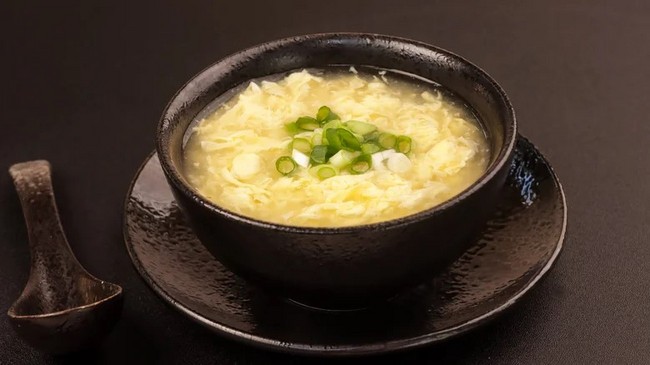
Sri Widyowati/Getty Images
Whether it be in a takeout order, an appetizer while dining in your favorite Chinese restaurant, or your main course with some fun toppings, egg drop soup is a favorite way to start the meal for many of us. The soup is simple but packs a powerful flavor punch while also being a comfort food. When you consider the short preparation time and the ingredient list, egg drop soup seems like it would be a breeze to re-create at home.
However, the home chefs who have tried (and faltered) making egg drop soup know that there is just something about the restaurant version that always seems to taste better. It can also be tough to achieve those perfect egg ribbons that are so aesthetically pleasing, but don't get discouraged if you haven't finessed the technique the first time! Chefs have divulged some of the secrets that make the egg drop soup you enjoy at restaurants taste better than what you make at home and tips to follow to make your next soup endeavor a success.
What is egg drop soup?
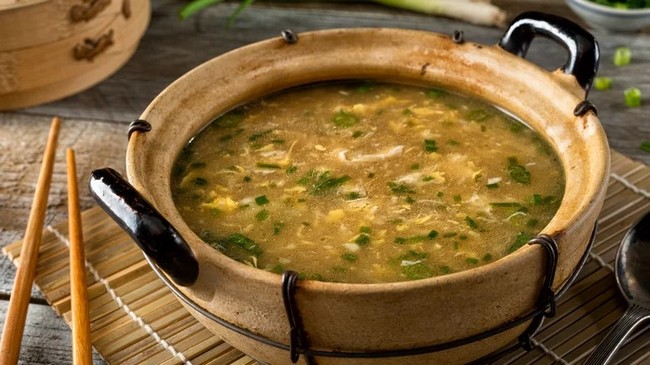
Fudio/Getty Images
Before you hit the kitchen, it may be helpful to understand what exactly is in the beloved egg drop soup that makes it so tasty. Egg drop soup is also known as Chinese flower soup — though you may be less likely to see it called that on menus. The soup is aptly named for the technique of dropping the whisked eggs in hot broth creating flower-like clusters. Historically, egg drop soup was used by imperial Cantonese court chefs to display their culinary prowess. It was popular in the United States during the Great Depression thanks to its simple ingredients and being protein-heavy without meat. Egg drop soup is also considered healthy, as it is low-calorie and low in carbohydrates.
There are many variations of egg drop soup both in Chinese cuisine and in other cuisines like the Italian version — Stracciatella alla romana, which adds grated Parmesan cheese. Most versions start out the same with a flavorful broth (usually chicken broth), eggs, a thickening agent like cornstarch, and some seasonings to personal taste.
Restaurants use high-quality chicken broth
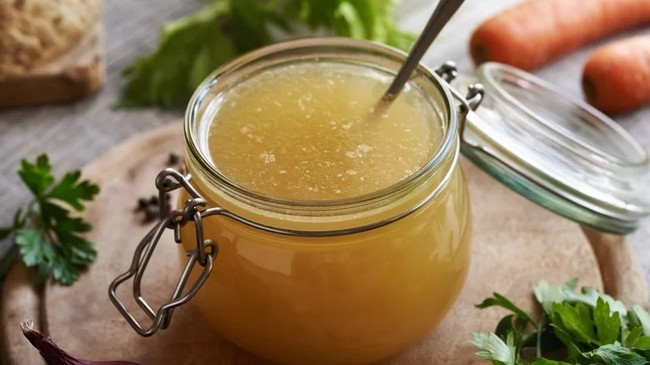
Madeleine Steinbach/Shutterstock
The first step in making egg drop soup is selecting a high-quality broth for the soup's base. "In the restaurant industry, as a general rule, chefs use well-flavored broth — usually homemade — derived from the combination of chicken bones, aromatic vegetables, and spices improving the richness and most importantly the texture of the soup," says Ranveer Brar, chef and owner of Kashkan Restaurant in Dubai.
Making your own stock can sound intimidating, but executive chef at DanDan Restaurant in Milwaukee, Evan Greenhalgh says it is easy and will add more flavor to the soup. "Just take the bones from a leftover roasted chicken and add some onions, garlic, carrots, and ginger. Cover with water in your largest pot and simmer for six hours or on very low heat overnight. Strain off just the liquid, and you're left with a great broth to start your soup with," he explains.
The stock can also have multiple uses and you can even make it ahead of time, according to Sophina Uong, chef and owner of Mister Mao in New Orleans. "Make the stock the night before to skim off the schmaltz, but save that fat for fried rice," she said, noting that the chicken stock should be rich but light and made with scallions and ginger. If you do opt to use store-bought chicken stock, Brar says to add some fresh garlic, and a few drops of soy sauce to enhance the flavor.
Chefs know what extra seasonings to add
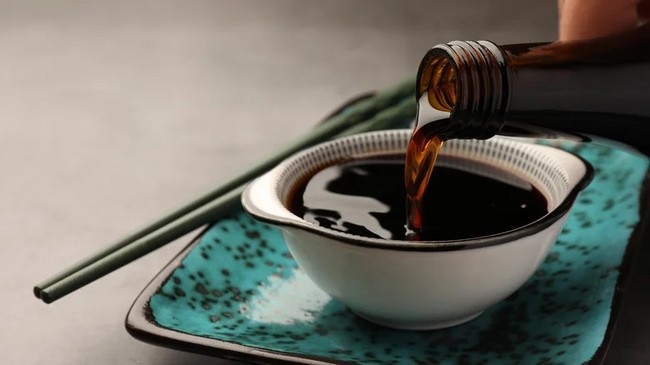
Liudmila Chernetska/Getty Images
Restaurant chefs often inherently know the added touch that makes egg drop soup's flavor profile shine. While you likely have soy sauce at home, sourcing some seasonings specific to Chinese cooking will make all the difference. "Fresh cracked white pepper is the quintessential Chinese flavor, scallion garnish, and don't be shy on the salt or white soy," says Sophina Uong. "A dash of Shaoxing wine gives your soup depth, a bit of acidity." You may be wondering what Shaoxing wine is. This rice wine has a unique taste, so it is not ideal to substitute. But if you are in a pinch, Shaoxing wine is similar to a dry cooking sherry or a Chinese rice wine.
In making egg drop soup at home, you can take the creative liberties that chefs do when they add extra seasonings on the fly. "Sometimes I will sneak in umami powder, it's basically a seasoning salt made out of dried shiitake mushrooms, and if I have it around, a few toasted and pounded dried shrimp," Uong says.
Evan Greenhalgh recommends sesame oil for egg drop soup. "Swirl a little good-quality sesame oil in at the end. If you add the sesame oil too early, the heat will break down the oil's aroma and flavor," he explains. Whatever seasonings you decide to add, using high-quality, fresh eggs as the base can start your soup off with the best flavor.
Restaurants may add MSG to their food
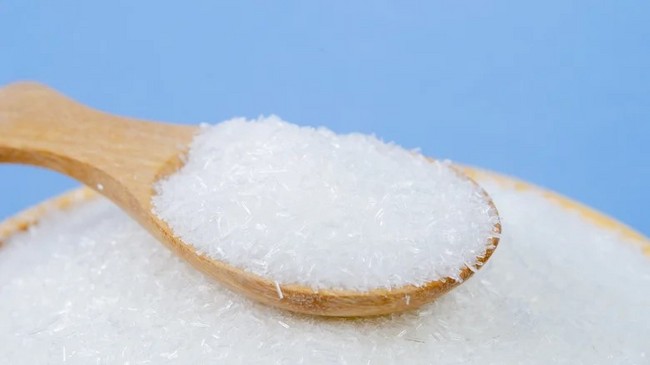
Gam1983/Getty Images
You have likely seen "no MSG" printed on sauce labels. MSG, or monosodium glutamate is a flavor enhancer made from sodium and L-glutamic acid, a nonessential amino acid. It is added to items like canned vegetables, deli meats, pre-packaged foods, soups, condiments, and restaurant foods to get a richer flavor. The goal is to replicate the flavors naturally found in umami-rich foods like tomatoes, mushrooms, and Parmesan cheese. MSG itself doesn't have a taste, which means you likely wouldn't even notice if it was added — except that the Food and Drug Administration requires manufacturers to list it as an ingredient in food items.
While many restaurants limit their use of MSG, it can be a common ingredient in soups. "Some restaurants like to use water with MSG, but I would suggest a soup stock made of chicken or pork ribs," says acclaimed Chinese chef Peter Chang. So if you notice that your home-cooked version isn't living up to the restaurant equivalent, MSG may be why. MSG has a bad reputation, however, 1990s research found that MSG was safe and that effects were due to large doses that were consumed without food. Recipes typically only use small amounts of MSG, so you likely wouldn't have an adverse reaction unless you have a sensitivity to MSG. While it contains less sodium than table salt, MSG is commonly associated with processed foods that can be higher in fat — so you may want to look for healthier alternatives.
Chefs know how to add eggs to soup to get flowering
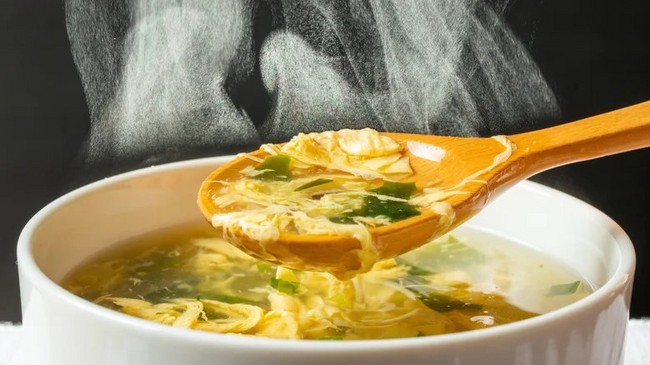
nest557/Shutterstock
Egg drop soup is known for its varying yellows and whites. "The Chinese name for the dish is egg 'flower' soup because of the flowering effect you achieve by adding the eggs," says Peter Chang. To ensure you get the delicate combination of both white and yellow egg swirls, experts say the first trick is how you prepare the eggs. "Make sure the eggs are beaten really well before you add to your chicken broth," says Sophina Uong.
Your next checkpoint is mastering the technique for adding the beaten eggs to your broth. Chang says after you beat your eggs thoroughly, then, "slowly stir them into the soup on the stove; it's essential to add them slowly so they 'flower' into long strands rather than clumps." If you are struggling with adding your eggs to your broth, Evan Greenhalgh suggests putting your scrambled eggs in a squeeze bottle to drip your eggs evenly. "While the soup is bubbling gently, lightly squeeze the egg in a thin stream into the soup in a circular motion. A lot of people will want to whisk it or stir it at this point, but don't," he explains. "Let the egg set for 20 seconds before gently stirring everything around." The speed is also a key component to achieving those perfect egg ribbons. Varying the speed of stirring can result in larger and smaller egg flowers. That is up to your personal preference.
Cook your soup at the proper temperature
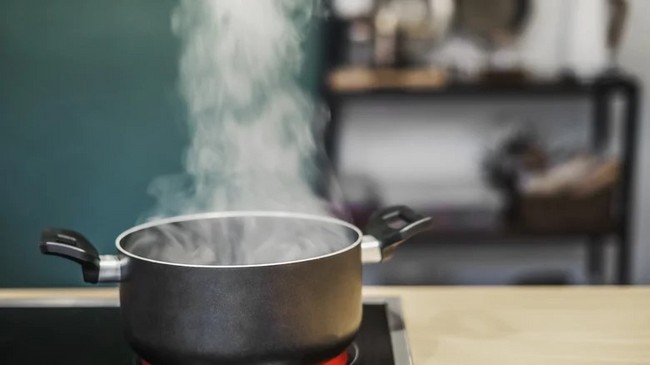
Vicuschka/Getty Images
Temperature control can be a difficult task with cooking in general. That is no exception for the making of egg drop soup. "The temperature has to be proper to make sure that the eggs drop gently into the slowly boiling broth during the process of drizzling in the beaten eggs, " says Ranveer Brar. "This is how the delightful silky ribbons are formed making the egg drop soup truly calming."
Cooking your soup at the appropriate temperature also ensures your eggs are not raw and they cook fully. Raw eggs can contain bacteria like salmonella, which causes food poisoning. The FDA recommends dishes containing eggs be cooked to 160 degrees Fahrenheit and that chefs utilize a food thermometer to measure that temperature.
Not only does the temperature control result in the perfect egg ribbons but maintaining the perfect heat level is also part of the reason why this soup is so quick to make. A flavorful soup in under 15 minutes makes egg drop soup a perfect comforting weeknight meal. And experts say the high temperature for cooking should continue on to serving. "I love my soups piping hot," says Sophina Uong.
Achieving restaurant-quality soup texture and thickness

Hang Tran/Getty Images
A soup that is the right consistency can hit the spot. However, there is a certain trick to getting your soup to hit the perfect spot between too thin and too thick. Luckily, experts say there is a simple technique that can be done at home. "To achieve the proper texture, thicken your soup with cornstarch slurry, which is just a little cornstarch mixed with water," says Peter Chang. Cornstarch acts as a thickening agent while also keeping the eggs tender. Without cornstarch, you likely will end up with a thinner soup than you experience when ordering at restaurants. You may also find your broth doesn't properly hold the eggs without a thickener like cornstarch.
Another consideration for cornstarch is that it could be a deal-breaker for dietary restrictions like the keto diet. Some recipes forego the cornstarch for a potato starch slurry (potato starch and water) to thicken egg drop soup. According to Made with Lau, potato starch is translucent and leads to a clearer soup that doesn't get watery if it sits out. You also typically don't need as much potato starch. If you decide to make your own potato starch slurry, be sure to add slowly with the heat turned off to prevent clumps. If you do end up with a soup that is way too thick for your liking, thinning it out can be as simple as adding some extra broth to balance the texture.
Restaurants may add food coloring or turmeric
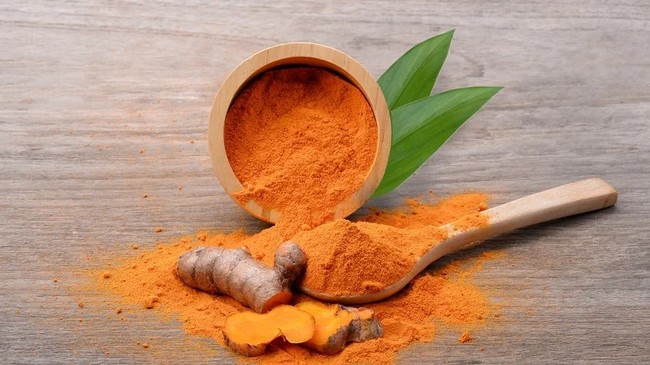
siriratsavett/Shutterstock
Egg drop soup in restaurants can be particularly memorable thanks to the bright, deep yellow color. You may have found that your at-home version did not live up your restaurant-style color expectation. The secret lies in adding some colorful seasonings as a natural color enhancer, according to experts. "If you want that bright, golden color, add just a dash of turmeric," says Evan Greenhalgh. It should be noted that turmeric may have more of a peppery taste if your soup is not properly balanced, as it can be described as comparable to mustard's flavor. Saffron is also another color-influencing seasoning to consider, but you may notice a different sweet and savory flavor.
Adding vegetables like carrot juice or golden beets can also influence the color of the soup by acting as a natural dye. If all else fails, restaurants may add commercial yellow food coloring to get that intense yellow color if the concentrated chicken soup base doesn't achieve the desired results. But if your egg drop soup color isn't a priority for you, this step is optional when cooking at home.
Serving tips for egg drop soup
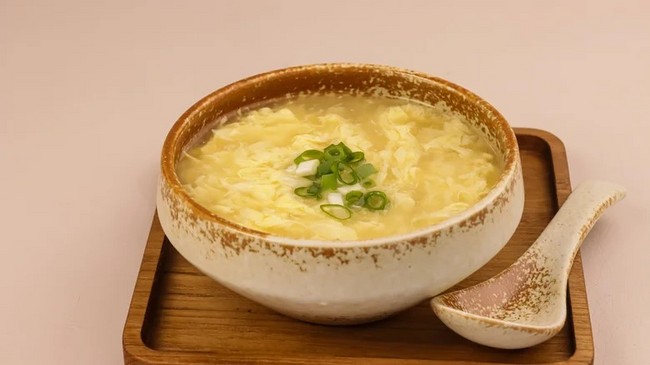
sri widyowati/Shutterstock
The fun part of making egg drop soup is finishing it off with special toppings based on your cravings. There are options like the tried and true fried wonton noodles you get with takeout, but experts also provided their favorite serving tips. "It's an endlessly adaptable soup — you can add fresh corn, freshly made scallion oil, scallions, and crispy wonton strips," says Peter Chang.
You can even amp up your soup's flavor profile by adding chopped tomato for a tomato-based egg drop soup that balances the saltiness with some acidity. Evan Greenhalgh says he personally likes to finish egg drop soup with a squeeze of fresh lemon juice. "I love to add julienne snow peas or tiny bits of fried tofu to egg drop soup," adds Sophina Uong, saying that you should always serve your soup with a side of chili oil. If you want your egg drop soup to be more than just a side dish, add some protein. Chang says adding wontons or tofu makes it a more substantial soup. "It's easy to make at home and very kid-friendly," he adds.
We haven't forgotten about those with dietary restrictions. Egg drop soup can even be made vegetarian or vegan. Chickpea flour is another option to use as a thickener and can also create those egg ribbons when combined with potato starch, yeast, water, and black salt. Now you have a vegan-friendly egg drop soup!
Serving and storing tips for best results
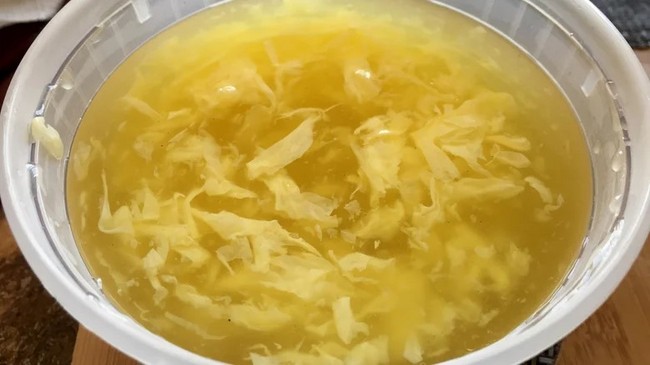
Midlightstar/Shutterstock
Now that you have done the hard part of making the egg drop soup, it's time to enjoy it. Experts say egg drop soup should be served immediately for the best results. "It's best served hot in a deep, round bowl with a soup spoon," says Evan Greenhalgh. If you can't eat the whole serving of egg drop soup at one time, it can be stored in the refrigerator for three to four days in an airtight container — but be warned that you may not experience the same texture as when the soup was first cooked. To mitigate possible texture issues when reheating, heat your egg drop soup slowly over low heat on a stove or in small increments in the microwave. If you heat your soup at too high of a temperature you may end up with more of a scrambled egg texture.
While other soups freeze and reheat well, the freezer is unfortunately not a great option for egg drop soup leftovers. The egg yolks don't hold up well in the freezer, becoming gelatinous and taking on a rubbery texture when reheated. With the main ingredients being eggs and broth, that means your egg drop soup's texture suffers after being frozen. And if meal-prepping is your game, you can make this soup ahead with some specific nuances. Make and store your stock separately in the fridge from your whisked eggs, combining slowly during the cooking process.
Previous:You've Been Making Homemade BBQ Sauce Wrong This Entire Time
Next:The Messy Origins Of The Colorado Slopper
Hot key words
Hot Products
Popular Vendors